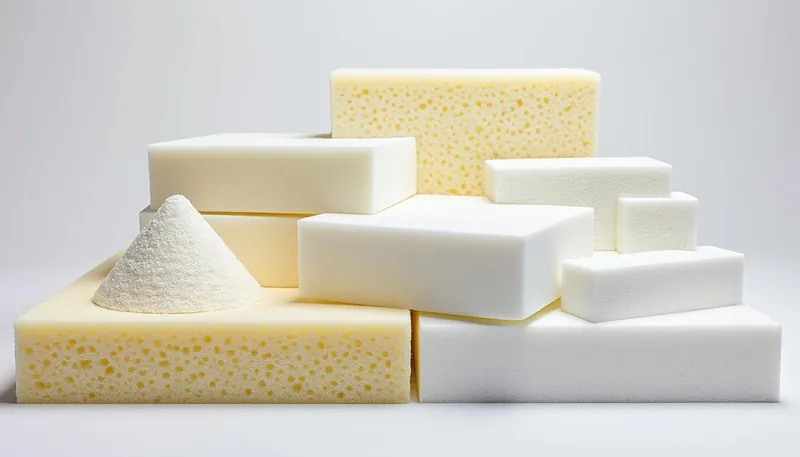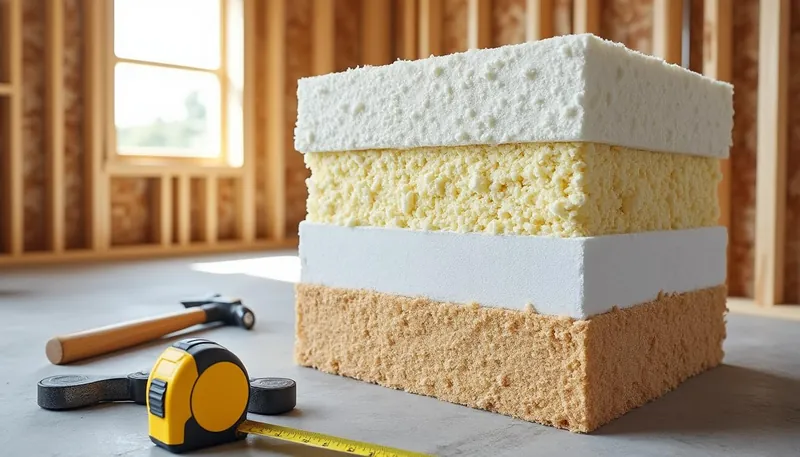The question of how thick foam insulation should be to achieve optimal performance is crucial for homeowners and builders alike. It’s a topic that affects energy efficiency, indoor comfort, and the overall sustainability of a building. The right thickness can significantly impact your energy bills—reducing them—and enhance your home’s livability. In a world increasingly focused on energy efficiency and environmental impact, making informed choices about insulation thickness is more relevant than ever.
For those who may not be aware, foam insulation is not your standard insulation material; it comes in various forms, each with its characteristics. Two main types dominate the market: open-cell and closed-cell foam. Each serves different purposes and operates most effectively at specific thicknesses. Additionally, conditions such as climate, building design, and local building codes can all influence the necessary foam insulation thickness. This article aims to break down these complexities and guide you towards understanding the precise thickness required for your foam insulation projects.
In Brief:
- Understanding the specific needs based on building type and climate is essential.
- The right thickness for foam insulation directly correlates with energy efficiency and comfort levels.
- Both open-cell and closed-cell foams have distinct characteristics that affect their necessary application thickness.
- Consulting with professionals can not only save time but also ensure compliance with local regulations.
Types of Foam Insulation and Their Recommended Thickness
When it comes to spray foam insulation, there are primarily two types: open-cell foam and closed-cell foam. Each serves different purposes and performs best at particular thickness levels.
Open-Cell Foam
This type is less dense and has a softer texture, making it suitable for many residential applications. It has an R-value of about 3.5 for every inch of thickness. An advantage of open-cell foam is its ability to expand in volume, which makes it highly effective for filling large cavities and irregular spaces. For example, if you’re insulating walls, approximately 5.8 inches are needed to achieve an R-value of 21, while around 6 to 10 inches is recommended for ceilings and roof decks.
Closed-Cell Foam
In contrast, closed-cell foam offers a denser and more rigid structure with a substantially better R-value of around 6 to 8 per inch. This increased density means fewer inches of closed-cell foam can achieve a higher R-value. For instance, to reach an R-value of 19 on walls, one would generally apply 2 to 3 inches of closed-cell foam. For ceilings, you might use 4 to 5 inches, and in areas with high moisture like basements, a thickness of 2 to 3 inches is often adequate.
| Type of Foam | Recommended Thickness (Inches) | R-Value per Inch |
|---|---|---|
| Open-Cell Foam | 5.8 for R-21 (Walls), 6-10 (Ceilings) | 3.5 |
| Closed-Cell Foam | 2-3 (Walls), 4-5 (Ceilings) | 6-8 |

Factors Influencing Insulation Thickness
Determining the right thickness can be a daunting task, considering numerous factors at play. Climate, home design, energy efficiency goals, and local building codes are all critical influencers when calculating the necessary insulation thickness.
Climate Zone
In colder regions, more insulation is generally required to maintain warmth indoors. For example, homes in regions facing severe winters might need an R-value of R-49 for attics. As a result, the thickness of the foam insulation would need to compensate by being greater than in a milder climate, where an R-value of R-30 might suffice.
Home Design
The architectural design of a building can significantly dictate insulation needs. Homes with many windows or vaulted ceilings may require extra insulation to counterbalance heat loss. It is also essential to consider corners, cavities, and any irregular spots that may not accept traditional insulation methods well. For instance, numerous windows might compel a homeowner to consider thicker insulation to prevent heat loss.
Energy Efficiency Goals
Those looking to maximize energy efficiency may choose to install thicker insulation. Energy savings can reach up to 30% when appropriately insulated. Therefore, if your objective is to decrease heating or cooling costs, opting for thicker insulation will lead to a better return on investment.
| Factor | Impact on Thickness |
|---|---|
| Climate Zone | Colder regions require thicker insulation |
| Home Design | More windows may require additional insulation |
| Energy Efficiency Goals | Higher efficiency requires thicker insulation |
Benefits of Proper Insulation Thickness
Getting the insulation thickness just right comes with a myriad of benefits, both short- and long-term. The key advantages include energy savings, increased comfort, moisture control, and even property value enhancement.
Improved Energy Efficiency
Proper insulation helps minimize the workload on HVAC systems, which subsequently lowers energy costs. It forms a barrier that maintains your desired indoor temperature—whether it’s during a sweltering summer or a frosty winter—so your HVAC system doesn’t have to work overtime.
Moisture Control
Correct insulation thickness also plays a role in moisture management. Foam insulation acts as a vapor barrier, giving an additional line of defense against water infiltration and condensation. This can prevent mold growth and potential structural damage, two issues that can be particularly costly for homeowners to address.
Increased Comfort and Comfort Levels
When insulation is properly installed at the right thickness, indoor temperatures remain more consistent, reducing drafts and cold spots. A well-insulated home leads to a more enjoyable living space, one where you do not have to worry about fluctuating temperatures.
| Benefits | Description |
|---|---|
| Energy Savings | Lower HVAC workload equals reduced energy costs. |
| Moisture Control | Prevents mold growth and structural damage. |
| Enhanced Comfort | Consistent temperatures improve livability. |

Professional Installation vs. DIY: The Right Choice for Foam Insulation
When it comes to installing foam insulation, one significant decision homeowners face is whether to go the DIY route or hire a professional. While DIY projects can save cash upfront, they also come with risks that can lead to issues down the line.
Professional Installation
Opting for professional installation generally ensures high-quality results. Professionals are well-versed in local building codes, how to effectively measure and apply the right thickness based on specific needs, and the proper techniques for achieving a strong air seal. For instance, a qualified contractor knows how to apply open-cell vs. closed-cell foam in a way that fits the building’s requirements perfectly.
DIY Installation
For smaller projects, DIY insulation may be tempting due to lower costs. However, it requires an understanding of the product and application techniques. Mistakes in this area can lead to uneven coverage or insufficient sealing, which can significantly reduce the effectiveness of the insulation. If you do decide to tackle it yourself, make sure to educate yourself on the various techniques and tools needed for a successful job.
| Installation Method | Pros | Cons |
|---|---|---|
| Professional Installation | High-quality, compliant, effective | Higher initial costs |
| DIY Installation | Lower costs | Risk of mistakes, uneven application |
What is the recommended thickness for open-cell spray foam?
Open-cell spray foam generally requires about 5.8 inches to achieve an R-value of 21 on walls and up to 10 inches for ceilings.
How thick should closed-cell spray foam be?
Closed-cell spray foam typically requires around 2 to 3 inches for walls and 4 to 5 inches for ceilings.
Can I install foam insulation myself?
While DIY installation can save money, it’s vital to educate yourself on proper techniques to avoid errors that may lead to poor insulation performance.
What factors influence the thickness of foam insulation?
Factors include climate zone, home design, local building codes, and energy efficiency goals.
What are the energy savings associated with proper foam insulation thickness?
Properly installed foam insulation can reduce energy consumption by at least 30%.

